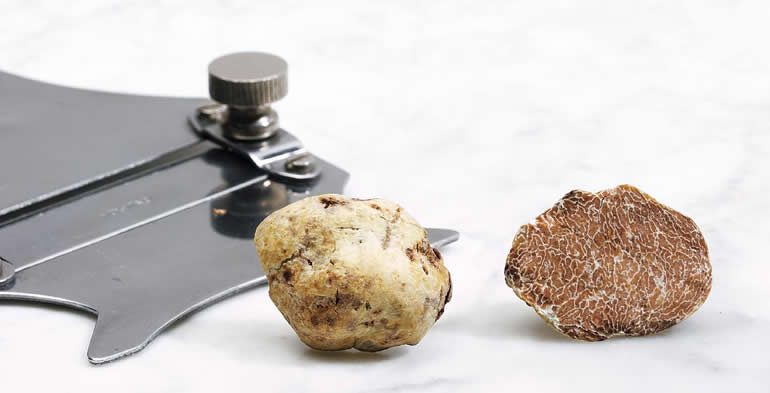-
White Truffle (Tuber magnatum Pico)

Organoleptic features: this is the best quality truffle in absolute. It has a very delicate yet persistent perfume that is richly nuanced and unmistakable. Due to these excellent characteristics and the restricted nature of the natural areas of production - attempts to reproduce them artificially do not seem to have been successful - this is the truffle that is the most highly appreciated on the market, often with very high value levels for the end consumer.
Symbiotic arboreal species: this fungus establishes a symbiosis with various arboreal plants that vary according to the production environments in which they fructify, as well as according to their geographical location. In Tuscany the most important tree species that establish a symbiosis with the white truffle are the white poplar, the black poplar, various types of hybrid poplars that reproduce naturally in the cool areas of the valley floor, various species of willow such as the white and red willow and salix caprea. The oaks found on the valley floor, include the English oak or Quercus robur, whereas on the more enclosed valley floors and in mountain areas, the white truffle is linked by symbiosis to the Hop Hornbeam, the Common Hornbeam, the Hazel, the Turkey oak and also the Lime tree.
Adjuvant shrubs:these are plants that are found in productive truffle-fields, albeit with a composition and density that differ according to the production environment considered. For this reason it is believed that they exercise a positive role in the fructification of the truffle. Shrubs such as dogwood, common dogwood, blackthorn, hawthorn, dog rose, juniper and spindle belong to this category. Blackberry brambles, despite not being neighbors can, in the presence of prolonged drought, maintain an environment that is more favorable to truffles in terms of temperature and soil humidity, especially on valley floors that are exposed to light.
